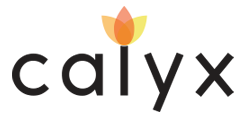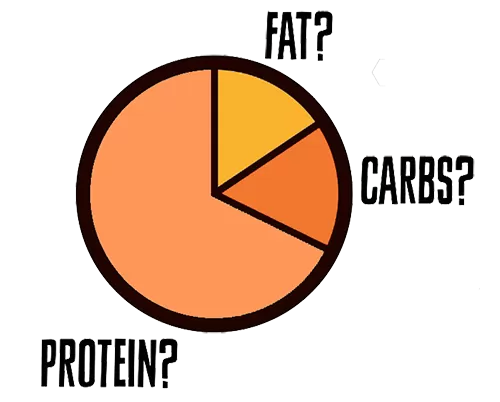Tracking macros can make a significant difference in reaching your desired goals whether it is fat loss or muscle growth. Using a macro app makes calculating and tracking easier. However, unless you know how to accurately and consistently log your data, your calories and macros will be wrong leaving you frustrated. This guide is to help busy individuals save time and get accurate results tracking meals.
tools to get you started
![]() Download a nutrition app like Nutritionix Track or Mymacros . These nutrition apps have a barcode scanner for foods that come in packages, but you will need a food scale to weigh fresh foods. Whether you are using a macro tracking app or a pen and paper, you’ll want to keep tracking of every single thing you eat and drink each day.
Download a nutrition app like Nutritionix Track or Mymacros . These nutrition apps have a barcode scanner for foods that come in packages, but you will need a food scale to weigh fresh foods. Whether you are using a macro tracking app or a pen and paper, you’ll want to keep tracking of every single thing you eat and drink each day.
consistently log everything for 2 weeks
Practice logging everything you eat and drink for 2 weeks. Don’t try to build meals to fit your macros if you have never tracked food. Start by just tracking foods you already eat day to day. Look at nutrition labels, learn what’s in the food you eat.
Example
For breakfast you eat 1 cup of rolled oats, 1 cup of strawberries, and 1 Tablespoon of peanut butter, and 1 scoop of protein powder. This is what it would look like in your nutrition app.
- Breakfast
- Strawberries frozen | 1 cup (140 grams)
- Peanut butter | 1 Tablespoon (32 grams)
- Whey protein powder | 1 scoop (30 grams)
- Rolled oats | 1 cup dry (90 grams)
- 574 kcals | 40.8 protein | 73 carbs | 13.5 fats
Pay attention to weights like grams and other measurements in food you eat regularly as this will help you once you begin planning meals to fit your macros.
be honest and consistent
If you wait until the end of the day to log your food, you will easily forget everything you ate. Log food as you eat it, especially if you don’t typically eat the same meals everyday. Another benefit of logging as you go through your day, is that it allows you to see where your calories and macros are.
Don’t forget to log the small stuff like coffee creamer, dressings, sodas, butter, etc. Be honest with yourself when logging higher calorie foods such as sweets, Starbucks drinks, chocolates, etc. A little here and a little there without logging can give you inaccurate daily totals.
tracking raw or cooked foods
It is important to note that the macros for cooked vs. raw foods can vary for the same volume. This is because the water is gained and lost through the cooking process. For example, when we cook meat, a certain % of the total water content is lost through evaporation.
Therefore, a 6 oz raw steak would have less calories than a 6 oz cooked steak. Other foods like oats, rice, and vegetables gain water when cooked. So, when entering your food, make sure to select cooked or uncooked in your app for the correct calculation.
pay attention to serving sizes
Packaged foods provide how many servings are in the whole container or package along with a breakdown of nutrition facts per serving. Example, a 6 oz (170g) can of salmon has 2 servings in the can. Each serving is 3 oz (85g). Depending on how much salmon you eat, 1-2 servings will have to be entered into your app for accuracy.
Example
1 serving of salmon (85g) = 100kcal while 2 servings (170g) = 200kcal.
cheat sheet for counting your own macros
- 1 gram of protein = 4kcal
- 100g cooked chicken, beef, fish, venison = approximately 25g protein
- 1 liquid egg whites = 5g protein
- 1 egg = 8g protein and 5g fat
- 1 gram of carbohydrate = 4kcal
- 1 small apple, small banana, or 2 cutie mandarin oranges = roughly 25g carbs
- Potatoes are approximately 25g carbs per 100g weight
- 1 cup cooked white rice (132g) is approximately 50g carb
Vegetables vary greatly in carbohydrate depending on whether it is a starchy vegetable, or leafy green. It is best to weigh vegetables that are more dense.
- 1 gram of fat = 9kcal
- 1 Tablespoon of olive oil has 14g fat = 120kcal
- 1 Tablespoon of butter has 11g fat = 100kcal
- 1 Mozzarella cheese stick has 6g fat, 6g protein = 78kcal
counting macros when eating out
Tracking macros when eating out can be a challenge. Restaurants don’t care about your macros, the chef cares that your food is tasty. There are high calories hidden in your large servings of food in the form of fats.
Here are a few tips to help you stay consistent
- Look at the menu ahead of time while you are undistracted and not under social pressure. This way you will know if there are healthy, low calorie options available at that particle restaurant. You can’t usually go wrong with grilled chicken, fish or steak along with steamed vegetables.
- When ordering your meal, ask the server if you can replace any fatty sides with steamed vegetables instead. Having your sauces and dressings ordered on the side will save calories.
- If you plan on splurging at the restaurant, you can go with lean high protein meals throughout the day to make up for some calories.
- Get into the right mindset. You are there to enjoy the company, and food, not to get stuffed.
- Have a high protein snack an hour before your meal. Going to the restaurant starving, just like grocery shopping on an empty stomach is a no go!
- Know your protein source fat content. Some cuts of meat are very fatty. We have developed a simple guide to macros to better help you understand lean protein sources. Sirloin, round, and flank steak are typically the leanest cuts while filet mignon, porterhouse, and rib eye are fattier cuts of steak.
- Use your hand to estimate portions for tracking accuracy. Obviously you won’t be carrying around your food scale with you. The size of your palm is roughly 25g protein. The size of your fist is roughly 1 serving of vegetables. A handful of starchy carbohydrates is roughly about 25g of carbs. Your thumb is roughly 15g of fat.
- Remember alcohol and sodas have calories too. You will need to track any beverages along with your food choices for accuracy.
When tracking calories, don’t aim for perfection. Aim for consistency and use the tools you have in your toolbox for accuracy. Hopefully, the tips above will steer you closer to your health and fitness goals! If you need help with your nutritional goals, calyx health and fitness is here to help

